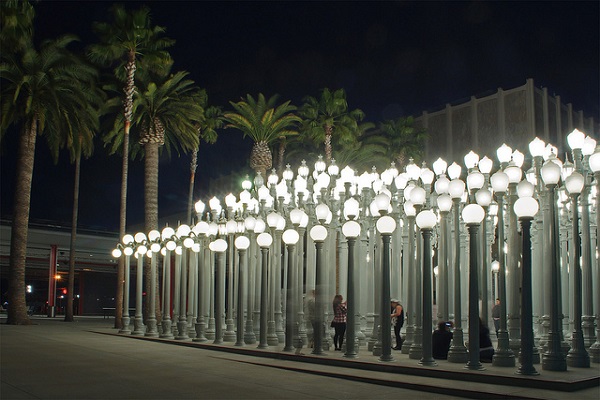
LACMA’s Islamic Art Now Exhibition Features Contemporary Artworks of the Middle East
- By Alison Lesley --
- 04 Mar 2016 --

Contemporary Art of the Middle East
In 2015, the Los Angeles County Museum of Art (LACMA) has redesigned its Islamic art galleries located at the 4th floor of the Ahmanson Building to accommodate a fresher and more modern art exhibition entitled Islamic Art Now: Contemporary Art of the Middle East. The exhibition will focus on contemporary or modern artworks of artists coming from or have roots from the Middle East.
LACMA’s Islamic Art Now Exhibition Features Contemporary Artworks of the Middle East.[/tweetthis]
It’s certainly a major innovation for the LACMA museum which for years has confined itself to historic and traditional Islamic artworks. The museum reintroduces Islamic culture, religion and tradition in an unexpected, dramatic and provocative manner. The LACMA describes the exhibition as a mingling of artist techniques with imagery and ideas from earlier periods. And as the museum notes it, the goal is to create links between the past, present and future.
The Islamic Art Now exhibition is divided into two parts. The first part of the program started last February 1, 2015 and lasted until January 3, 2016. The first set of artworks displayed was specifically selected with one goal in mind; to highlight the diversity of the Middle East region including its Diaspora communities in an effort to break that conventional notion the Western world has of the region. The first part exhibit included 27 art pieces from Iran and other Arab countries with notable artists like Wafaa Bilal, Lalla Essaydi, Barbad Golshiri, Mona Hatoum, Susan Hefuna, Youssef Nabil, Shirin Neshat and Mitra Tabrizian.
The second part of the exhibition is ongoing and started last January 24, 2016. The ongoing program showcases around 31 artworks from Iran, Arab countries and extends to Northwest Africa, Turkey and Azerbaijan. Featured artists include Faig Ahmed, Fereydoun Ave, Shoja Azari, Burhan Doǧançay, Shadi Ghadirian, Sherin Guirguis, Hassan Hajjaj, Lulwah Al Homoud, Ahmed Mater and Newsha Tavakolian.
"Islamic Art Now Part 2 feat/ 31 works by artists from Iran, Turkey and Azerbaijan LACMA https://t.co/uhKvVyqGRy pic.twitter.com/sOrqbLnFdk"
— Magnus Sebastian (@Magnus_Sculptor) February 2, 2016
The selected artworks on display is part of the nearly 200 contemporary Islamic art collection gathered by the museum’s Islamic Art director and curator Linda Komaroff with support from donors and from the Art of the Middle East: Contemporary Council. Explaining some of the artistic images that feature women as the subject, Komaroff can’t help but notice the resemblance of Middle Eastern women to that of the western societies. As Komaroff cites “To me, a lot of these images are a challenge to an American audience to maybe rethink what their perceptions are of women in the Middle East, women in the Islamic world. Maybe they're not that different from us after all.”
Komaroff also described the encompassing nature of Islamic art “When we use the term 'Islamic art' we're not talking about Islam, we're not talking about religion. All the artists here are from this world that was initially shaped by Islam, by an Arabic alphabet, but has evolved into something so much more and much more complex than standard views of either religion or violence. It's about beauty as well.”
Among the notable artworks displayed or currently on display include the blue neon light artwork by Nasser Al Salem titled God is Alive, He Shall Not Die which represents the infinite and highly spiritual nature of God or Allah. Sherin Neshat’s “Speechless” will certainly make viewers question the real message of the artist for presenting the half side face of a female warrior covered with minute Arabic inscriptions about martyrdom and protection while at the same time seemingly pointing a gun directly at the viewer.
There’s also the Reclining Odalisque by Lalla Essaydi wherein the female subject is also covered with calligraphy from head to foot. The Gang of Kesh Part 2 crafted by Hassan Hajjaj capture Moroccan women who seemingly defy traditional women roles by posing as a modern biker gang. Examples of other impressive works include The House That My Father Built by Sadik Alfraji, Down with Communism by Ahmad Aali, Woman Behind Mashrabiya I by Susan Hefuna, Tehran by Mitra Tabrizian and Lost in Wonderland by Amir Mousavi.


















